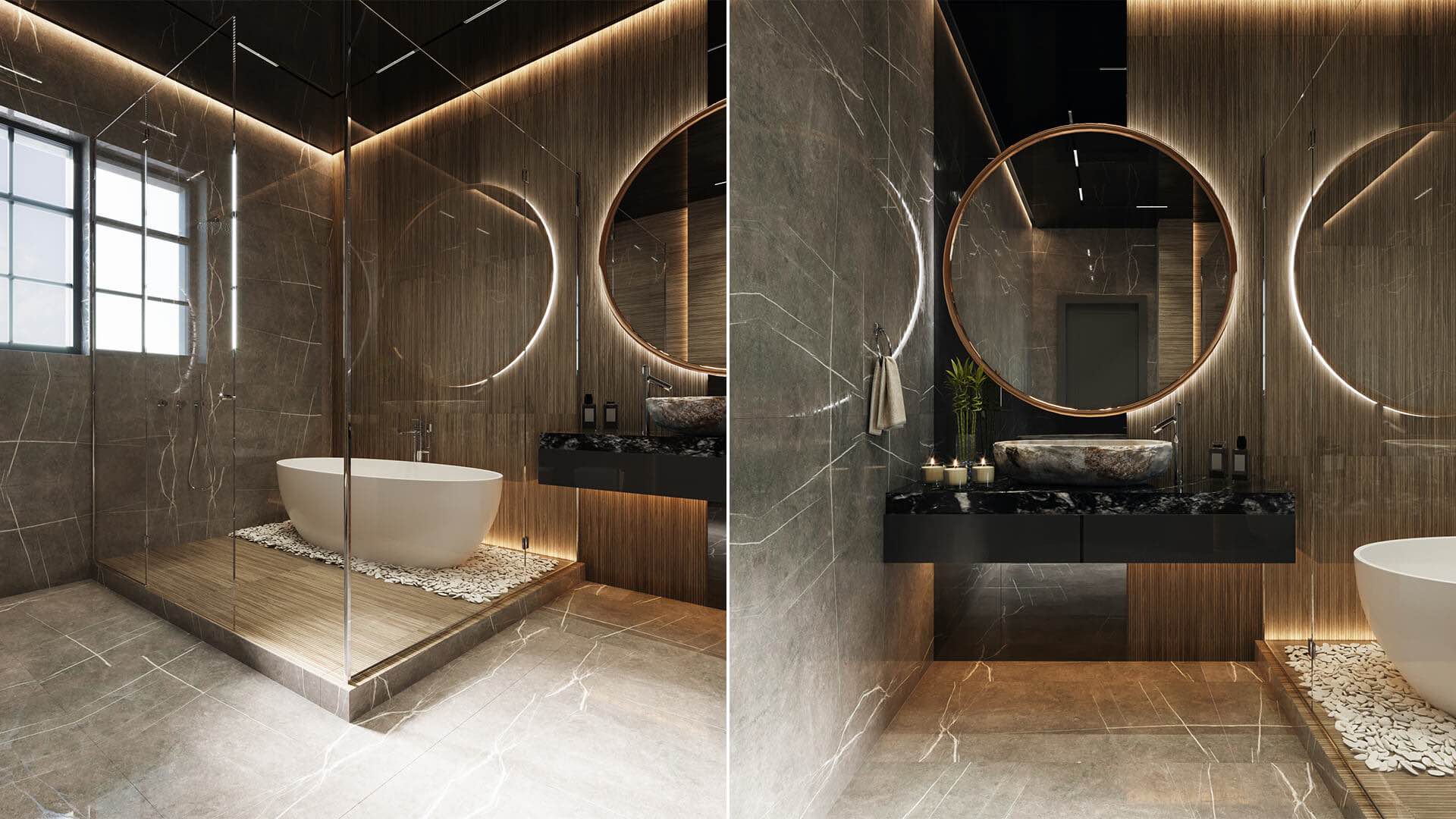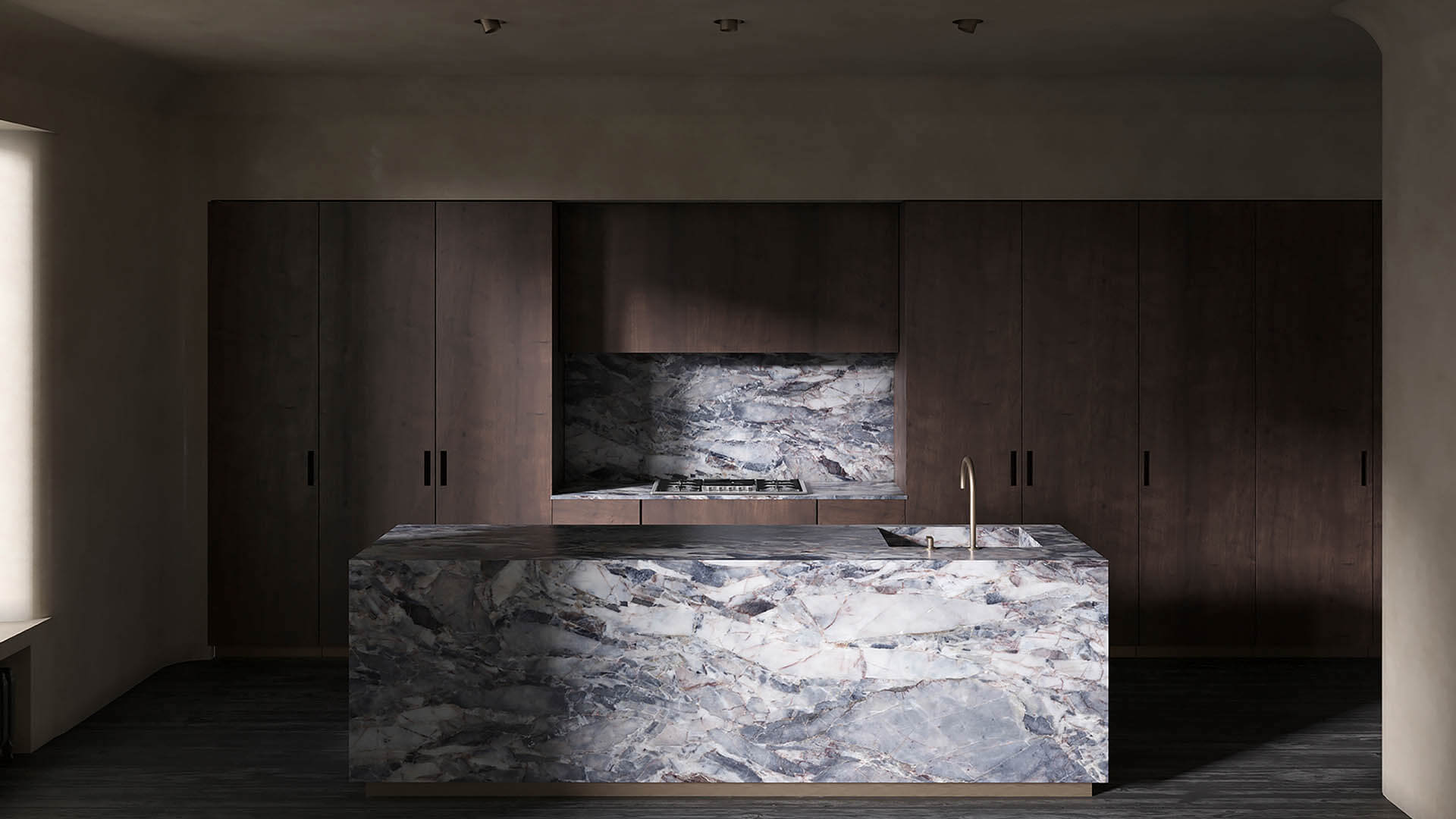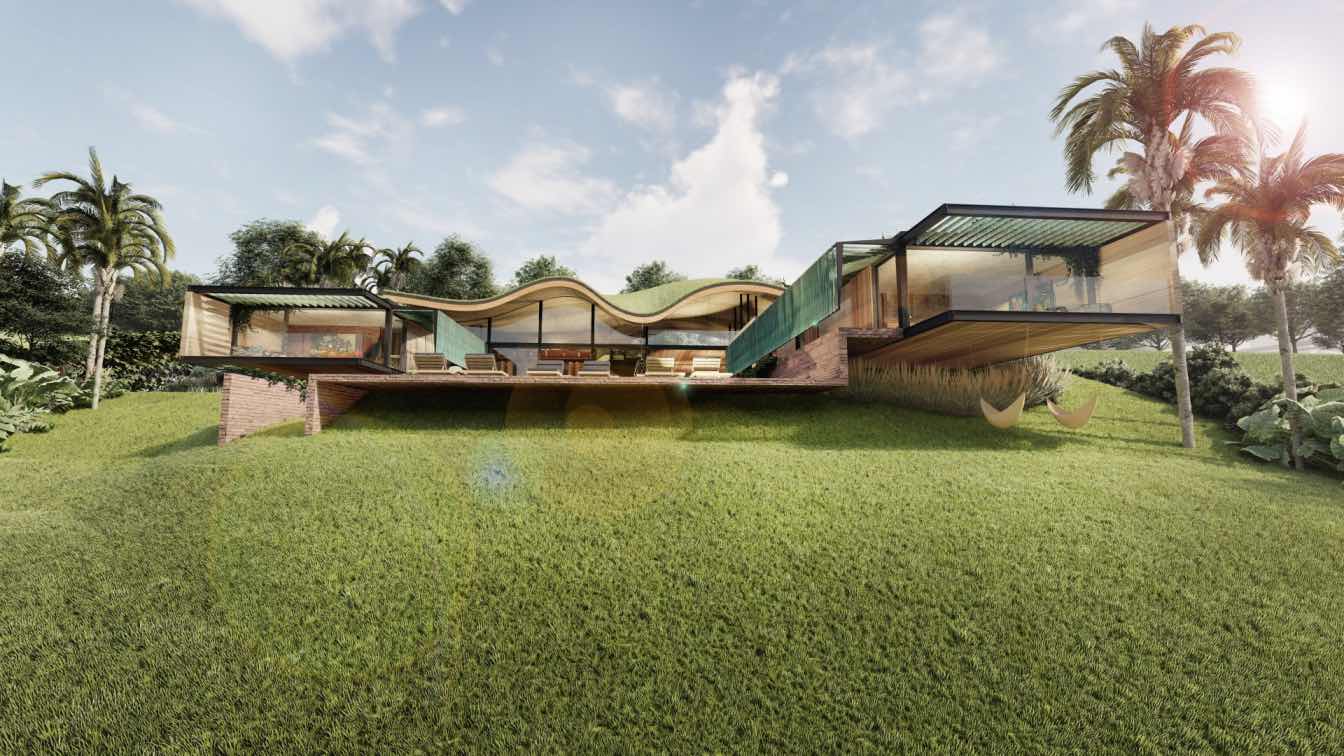OODA: Located at the confluence of the mountains and the sea, the project has been carefully integrated into the Sintra-Cascais Natural Park, creating a subtle transition between urban and rural landscapes. The immediate surroundings are characterized by vernacular architecture, with stone walls and cottages nestled in the mountains, emphasizing the historical and cultural character of the region.
The proposal consists of two residences designed to blend discreetly into the landscape, with only two floors above ground. Situated on a promontory, the houses offer privileged views of the surrounding countryside. The connection with the topography is established by a steep rocky slope, largely preserved in its natural state, highlighting the rock formations and the existing vegetation, composed of trees that blend harmoniously into the landscape. One of the main elements of the project is the use of the natural resources of the land.
The horizontal cantilevered slabs extend the garden areas and create a sense of continuity between the interior and exterior. This strategy not only strengthens the visual connection with the landscape, but also ensures that each house has an unobstructed view of its surroundings. The proposal is to cover the vertical exterior surfaces with cyclopean concrete, using the stones available on the site. This material, in addition to being robust, integrates into the landscape, conveys the idea that the new building belongs to the site, and acts as a transitional link between the existing buildings and the new one. For the horizontal planes, which act as slabs in the building and have a distinctive im- pact on the overall aesthetics, it is proposed to use pure, smooth concrete.

This choice aims to create a visual and textural contrast with the vertical elements in cyclopean concrete, giving them greater prominence. This contrast aims to give the feeling of new elements resting on the walls made of local materials, giving a striking visual dynamic to the complex. The solar orientation was carefully studied to maximize natural light and promote energy efficiency. In addition, the integration of artistic elements throughout the project adds a cultural touch that organically blends into the architectural language, enriching the spaces with a sense of identity and expression.
Meticulous planning ensures a strong connection to the outdoors, with each interior space designed to offer unique views of the landscape. Large openings and open layouts enhance the impact of the views, making the natural environment an integral part of the living experience in these spaces.
In keeping with the project’s commitment to sustainability and environmental preservation, the landscape design includes reforestation with native hardwood species. This choice enhances local biodiversity and ensures that the new development is in harmony with the existing ecosystem. The result is a residential environment that blends naturally into the landscape, where architecture and nature coexist in perfect harmony.























